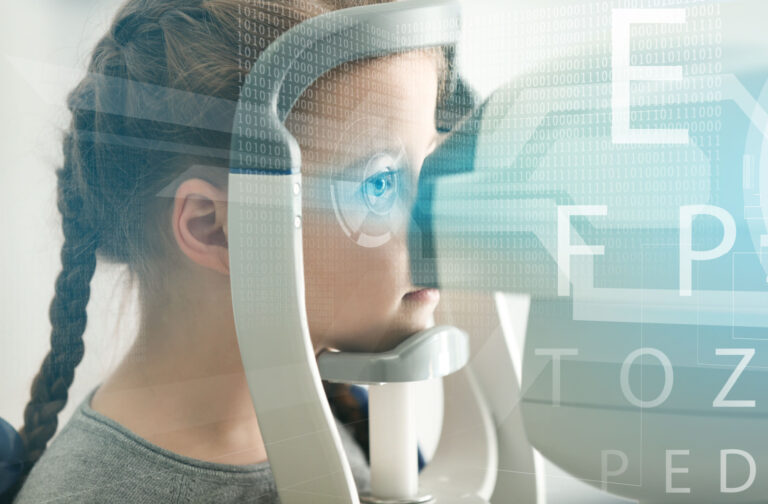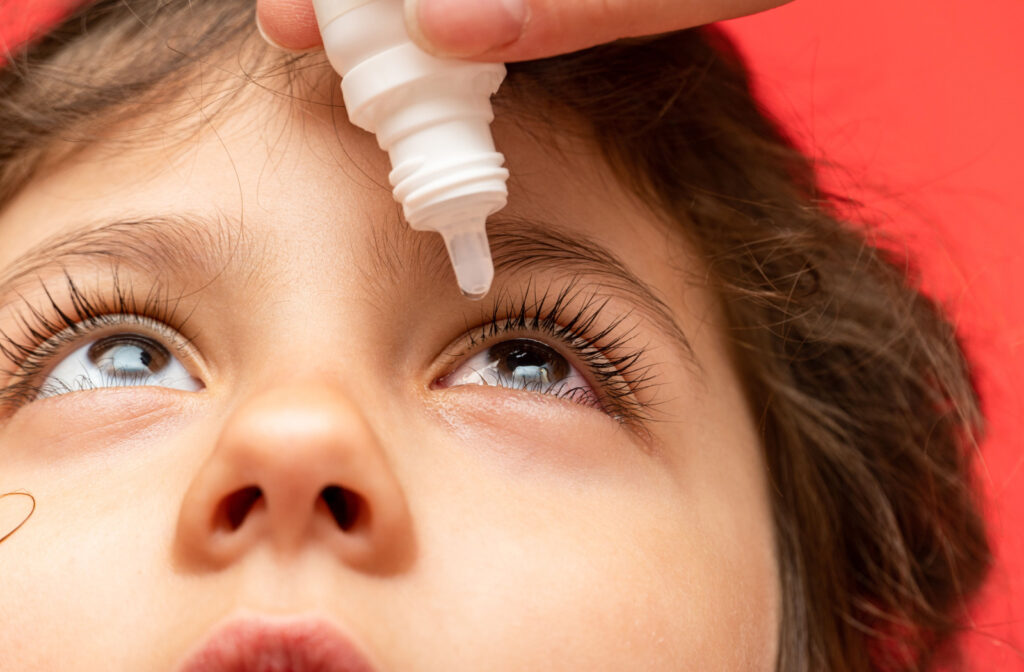Table of Contents

What Is High Myopia and How Can It Be Treated? [高度近视- 怎么治疗?]
If you’re a parent, you’re likely familiar with myopia, or nearsightedness, a refractive error that makes distant objects appear blurry. While there’s no safe level of myopia, a more severe form is known as high myopia, and it comes with various risks of serious eye conditions.
High myopia requires a strong corrective lens prescription and can increase the risk of glaucoma, macular degeneration, and retinal detachment, among others. Treatment usually involves slowing its progression during childhood using specialized contact lenses, multifocal glasses, atropine drops, and low-level red light therapy.
What Is Myopia?
Around 42% of Americans are grappling with myopia. And it’s not just the numbers that are startling; myopia seems to develop up earlier and progress faster than ever before.
When does myopia become high myopia? Myopia is considered “high” when it becomes so severe that you require a correction of -6 diopters or more in your glasses or contact lenses. In simpler terms, the higher the negative number, the thicker your lenses are and the more severe the blurriness.
High myopia occurs because your eye grows longer than usual or your cornea is too curved. It often worsens during adolescence, stabilizing around age 20.
Signs of myopia in children include:
- Eye discomfort and fatigue
- Frequent eye rubbing or blinking
- Short attention span
- Frequent headaches
- Tilting the head to one side
While glasses or contact lenses can correct high myopia, they do nothing to stop it from progressing. Those with myopia have an increased risk of vision problems like:
- Glaucoma
- Cataracts
- Retinal detachment
- Myopic macular degeneration
Diagnosing High Myopia
An optometrist can diagnose myopia during a pediatric eye exam. Children’s eyes grow fast, so vision complications can develop quickly, seemingly out of nowhere. And with their fast-growing eyes, young children with myopia are at risk of developing high myopia.
Retinoscopy is a helpful method to precisely measure refractive errors in a child’s eyes. During this test, the eye doctor uses a retinoscope to shine light into the child’s eye. By carefully watching the reflection that comes back from the retina, the doctor can determine what vision issue is affecting your child’s eyesight, if any.
Myopia Treatments
There are several treatments for high myopia. While single-lens spectacles and contact lenses can correct blurry vision, your child may need other methods to slow myopia’s progression.
Ortho-K Lenses
Orthokeratology, ortho-k, uses custom rigid, gas-permeable lenses worn while your child sleeps. These specialty lenses gently flatten the cornea to correct myopia during the day. Not only do they correct vision, but they can also slow myopia progression by up to 50%.
Ortho-k requires careful fitting and regular follow-ups. They also need to be worn consistently or the eyes may return to their original shape. ACUVUE Abiliti Overnight lenses are specially designed to be easier for children to insert and remove.

Atropine Eye Drops
Atropine eye drops contain a medication that relaxes the eye muscles and dilates the pupil. Research has shown that low-dose atropine (0.01%) can slow the progression of myopia, making it a popular option for children and teens with high myopia. However, they’ll likely still need corrective lenses.
Multifocal Spectacles
Multifocal spectacles are an alternative to single-vision glasses (which correct myopia but don’t slow it down). While multifocal glasses are undergoing FDA trials, Essilor Stellest and MiYOSMART lenses have shown promising clinical results in slowing myopia progression. These lenses use advanced technology to refocus center and peripheral light differently.
These multiple focusing areas can correct your child’s myopia while using the peripheral light to cue their eye to stop growing longer. Studies have shown that multifocal spectacles can slow myopia progression by more than 60%.
MiSight Contact Lenses
MiSight contact lenses are soft contacts designed to slow myopia progression in children. They’re worn during the day and disposed of every night. Their design is like a bullseye: the center corrects myopia, while the outer ring focuses peripheral light rays onto the retina.
Changing how light focuses through the eye can slow eye growth in children by up to 59%.
Repeated Low-Level Red Light Therapy
Repeated low-level red light therapy (RLRT) is an emerging treatment for myopia control involving exposing the eyes to low-level red light. While studies are ongoing, some have shown a reduction in myopia progression with no documented damage. Research on RLRT is in the early stages, but you can discuss this management option with your optometrist.
Options for Myopia Control
Myopia is a vision error that demands attention and proactive management. You have the power to positively affect your child’s vision long into the future, and it all starts with a trip to your optometrist.
At Golden Vision, we’re dedicated to providing comprehensive and personalized eye care for individuals with all levels of myopia. We offer a range of treatment options and personalized programs for every unique child.Take charge of your child’s eye health and book an eye exam with Golden Vision today. We’re located in Arcadia, Cupertino, Dublin, Irvine, Milpitas, Rowland Heights, San Diego Plaza, San Francisco, and San Gabriel.

